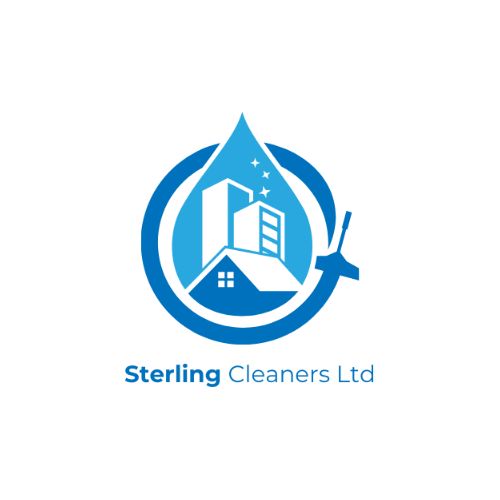You’re shopping for a new sweater, and you’re faced with a dizzying array of options. Some are made from natural fibers like cotton or wool, while others are made from synthetic fibers like polyester or nylon. But what’s the difference between these two types of yarn? Natural yarns are derived from plant or animal sources, while synthetic yarns are created through chemical processes. Each type has its own unique properties, from durability and comfort to cost and environmental impact. In this blog, we’ll dive deep into the differences between these two types of yarn, focusing on their properties, uses, and impact on the environment. With insights from top yarn suppliers in Pakistan, you’ll gain a clearer understanding of which yarn might be the right choice for your needs.
What Are Natural Yarns, and How Are They Produced?
Natural yarns come from organic sources like plants and animals. The most common natural yarns include:
- Cotton: Derived from cotton plants, cotton yarn is soft, breathable, and ideal for a variety of applications, from clothing to home textiles.
- Wool: Sourced from sheep and other animals, wool yarn is known for its warmth and durability, making it perfect for winter wear.
- Silk: Produced by silkworms, silk yarn is luxurious, smooth, and lightweight, often used in high-end fabrics.
The production process for natural yarns generally involves harvesting, cleaning, and spinning the fibers into yarn. These processes may vary depending on the source, but the key characteristic of natural yarns is that they are biodegradable and sustainable.
What Are Synthetic Yarns, and How Are They Made?
Synthetic yarns are man-made fibers created through chemical processes, often from petroleum-based products. Common synthetic yarns include:
- Polyester: One of the most widely used synthetic fibers, polyester yarn is durable, wrinkle-resistant, and affordable, making it a staple in modern textiles.
- Nylon: Known for its strength and elasticity, nylon yarn is commonly used in activewear, swimwear, and outdoor fabrics.
- Acrylic: Often used as a wool substitute, acrylic yarn is lightweight, warm, and resistant to moths and mildew.
The production of synthetic yarn involves extruding liquid polymers through spinnerets to create fibers, which are then spun into yarn. Polyester yarn suppliers in Pakistan, like Avon Commercial, play a key role in ensuring a steady supply of these materials for various industries. Unlike natural yarns, synthetic yarns do not come from renewable sources, and their production can have significant environmental impacts.
How Do Synthetic and Natural Yarns Compare in Terms of Durability?
Durability is a key factor when choosing yarn for textiles. Synthetic yarns tend to outperform natural yarns in this area:
- Synthetic Yarns: Polyester and nylon are incredibly strong and resistant to wear and tear. They are less likely to shrink, stretch, or fade over time, making them ideal for long-lasting fabrics.
- Natural Yarns: While natural fibers like cotton and wool are durable, they can wear out more quickly, especially with frequent washing or exposure to harsh elements. Wool, in particular, can be prone to pilling.
Overall, synthetic yarns are often the better choice for fabrics that need to withstand heavy use, such as outdoor gear and industrial textiles.
What About Comfort—Which Yarn is Softer and More Breathable?
When it comes to comfort, natural yarns generally come out on top:
- Natural Yarns: Cotton and wool are naturally breathable, allowing moisture to evaporate and air to circulate. This makes them ideal for clothing, especially in hot or humid climates. Wool is also a great insulator, keeping you warm in cold weather without feeling heavy.
- Synthetic Yarns: Polyester and nylon, while durable, are not as breathable as natural fibers. They tend to trap heat and moisture, which can lead to discomfort, especially in warm conditions. However, advancements in textile technology have led to moisture-wicking versions of synthetic yarns that are used in activewear.
For everyday wear, particularly in hot climates, natural yarns are often preferred for their softness and breathability.
How Do Synthetic and Natural Yarns Impact the Environment?
Environmental impact is a major consideration for consumers and manufacturers alike. Here’s how the two types of yarn compare:
- Natural Yarns: Since they come from renewable resources like plants and animals, natural yarns are generally more sustainable. Cotton and wool are biodegradable and can decompose naturally, reducing their long-term environmental footprint. However, traditional cotton farming can be resource-intensive, requiring significant water and pesticide use.
- Synthetic Yarns: Polyester and other synthetic fibers are derived from petroleum, a non-renewable resource. They are not biodegradable and can take hundreds of years to decompose. Additionally, the production of synthetic yarns releases harmful chemicals into the environment.
Sustainable practices, such as using organic cotton or recycled polyester, can mitigate some of these environmental concerns. However, natural yarns are often seen as the eco-friendlier option.
How Does Each Type of Yarn Affect Fabric Cost?
Cost is a crucial factor for both manufacturers and consumers:
- Natural Yarns: Natural yarns, especially high-quality ones like organic cotton and merino wool, can be expensive due to the labour-intensive production process. Silk, in particular, is one of the most costly fibers.
- Synthetic Yarns: Polyester and acrylic are generally more affordable, thanks to the efficiency of their production processes. This makes them a popular choice for budget-friendly clothing and home textiles.
In terms of affordability, synthetic yarns have the upper hand, but natural yarns are often viewed as a worthwhile investment for their comfort and sustainability.
How Do Synthetic and Natural Yarns Perform in Dyeing and Color Retention?
Color retention is an important factor, especially for fashion and home textiles:
- Natural Yarns: Cotton and wool have excellent dye absorption, resulting in vibrant, rich colors. However, they may fade over time, especially with exposure to sunlight or frequent washing.
- Synthetic Yarns: Polyester and nylon hold color exceptionally well, often retaining their vibrancy for much longer than natural fibers. This makes them ideal for items that are frequently exposed to the elements, such as outdoor gear or uniforms.
For fabrics that need to maintain their color over time, synthetic yarns are generally the better choice.
How Are Synthetic Yarns Used in Blends with Natural Yarns?
Blending synthetic and natural yarns is a common practice that combines the best qualities of both types:
Durability and Comfort:
Blends of cotton and polyester, for example, offer the softness and breathability of cotton with the durability and wrinkle resistance of polyester. This makes them ideal for clothing that needs to be both comfortable and long-lasting. Additionally, these blends are often easier to care for, requiring less ironing and holding up better after repeated washing, making them a popular choice for everyday wear and activewear.
Cost Efficiency:
Blending natural yarns with synthetics can reduce production costs while maintaining quality. This allows manufacturers to produce affordable yet high-quality fabrics. The use of synthetic fibers in blends also enhances fabric properties like stain resistance and faster drying times, providing consumers with practical benefits while keeping the price accessible. This balance of quality and cost makes blended fabrics appealing across various industries, from fashion to home textiles.
Blended fabrics are widely used in various industries, from fashion to home textiles, offering a balance of comfort, durability, and cost-efficiency.
What Are the Key Differences in Maintenance Between Natural and Synthetic Yarns?
Maintenance is another area where these yarns differ:
- Natural Yarns: Fabrics made from natural yarns often require more care, such as gentle washing and air drying, to prevent shrinkage or damage.
- Synthetic Yarns: Polyester and nylon are easy to care for, as they are resistant to shrinking, stretching, and wrinkling. They can typically be machine washed and dried without issue.
For low-maintenance fabrics, synthetic yarns are usually the best option.
How Do Synthetic and Natural Yarns Affect the Future of Textiles?
As the textile industry evolves, both natural and synthetic yarns will play key roles in shaping its future. Sustainability concerns will likely push more manufacturers toward eco-friendly options like organic cotton and recycled polyester, while technological advancements in synthetic yarns will lead to fabrics that are more durable, comfortable, and versatile than ever before.
Comparison Table: Synthetic vs. Natural Yarns
| Feature | Synthetic Yarns (Polyester, Nylon) | Natural Yarns (Cotton, Wool) |
| Durability | Extremely durable, resistant to wear and tear | Durable, but more prone to wear over time |
| Comfort | Less breathable, can trap heat | Soft, breathable, great for sensitive skin |
| Environmental Impact | Made from non-renewable resources, non-biodegradable | Renewable, biodegradable, but can be resource-intensive |
| Cost | Generally, more affordable | Often more expensive due to labour-intensive production |
| Color Retention | Excellent, colors stay vibrant longer | Good, but can fade over time with washing and exposure |
| Maintenance | Low maintenance, machine washable | Requires more care, such as gentle washing |
One Last Thing: Synthetic vs. Natural Yarns – Which Is Right for You?
The choice between synthetic and natural yarns comes down to what you value most in fabric. For strength, durability, and cost-effectiveness, synthetic yarns like those provided by polyester yarn suppliers in Pakistan are ideal. For softness, comfort, and sustainability, natural yarns remain unbeatable. By understanding these differences, you can make informed decisions whether you’re in fabric production or simply purchasing textiles for personal use.
Both types of yarns have their place, and finding the right one depends on your specific needs. With a range of options from yarn suppliers, you can explore the best of both worlds.
Stay in the loop for more details on Coer University!










